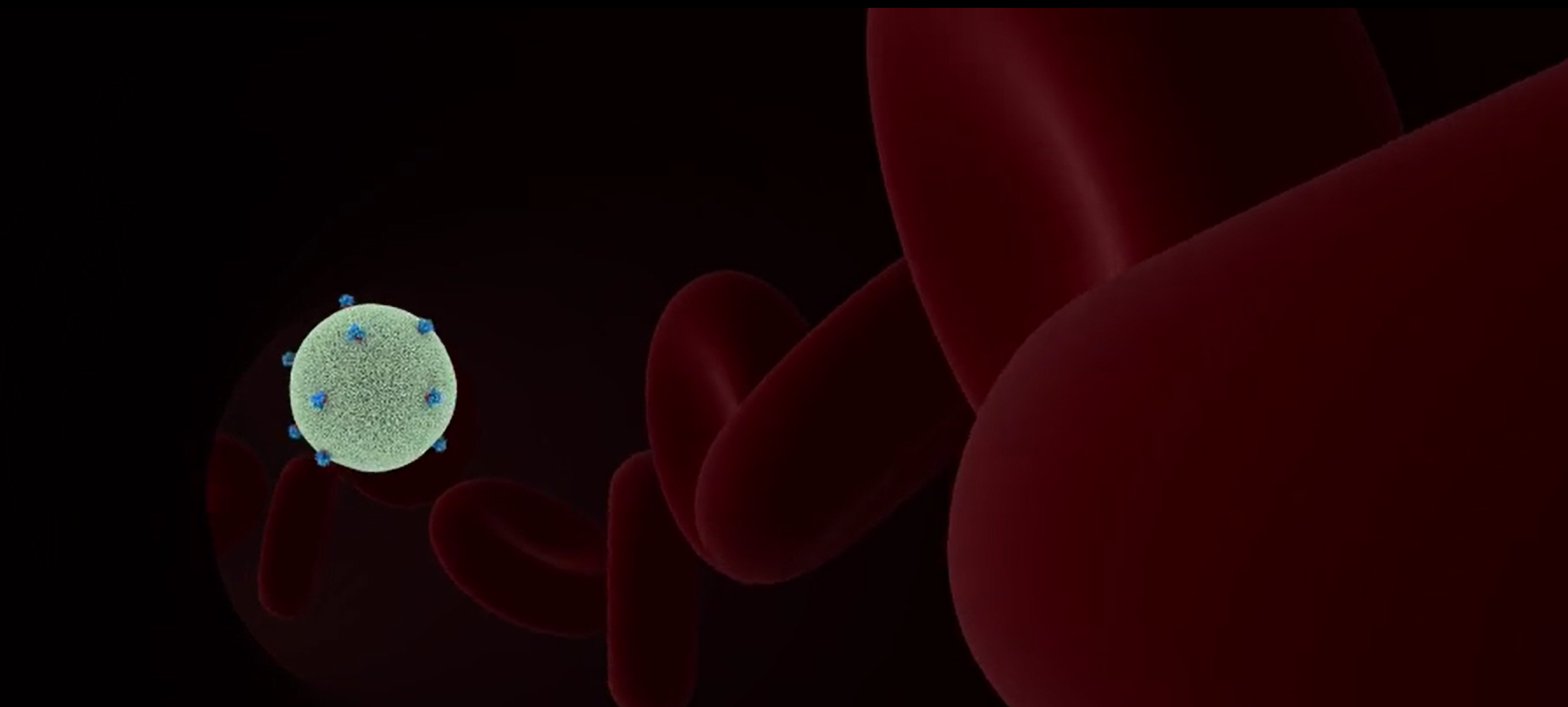
Gene and Cell Therapy
Researchers are also exploring other possible HIV cure approaches that focus on gene and cell therapies. The goal of gene therapy is to deliver therapeutic genes into a patient that will treat the disease. In cell therapy, living cells are transplanted into a patient to treat the disease.
One cell therapy approach involves engineering HIV target cells to render them resistant to HIV entry. Another approach is to modify cytotoxic T cells to selectively target and eliminate infected cells. Generally, these therapies rely on genetic modification to “edit” the blood cells of the patient so that they become resistant to HIV or become better at targeting and eliminating HIV and infected cells.
In gene therapy, anti-HIV genes are introduced into cells using a viral vector or an engineered nanoparticle. Gene therapies use different approaches to target HIV. In some cases, target genes are edited either by inserting a therapeutic sequence or by disrupting DNA sequences of proteins that are important in the HIV life cycle. Examples of gene editing methods include the use of TAL-effectors or zinc fingers with nuclease, and/or CRISPR-Cas9. With these techniques, a specific sequence of DNA is recognized and cut, and (in some cases) new DNA is introduced at the cut site.
A primary target for many gene therapy approaches is the CCR5 gene. CCR5 is a receptor found on the surface of white blood cells, including T cells, and is required by HIV to enter T cells. When this protein is absent (such as in individuals with a naturally occurring deletion, such as one called CCR5-Δ32), HIV cannot infect cells. An individual known as the “Berlin Patient” was cured of his leukemia and of HIV when he received a stem cell transplant from a donor who has a double CCR5-Δ32 deletion mutation. This mutation, however, is very rare. Many current cure approaches focus on introducing CCR5 deletions or mutations. One possible complication, however, is that a similar receptor to CCR5, called CXCR4, exists in white blood cells, and it is possible that HIV may be able to adapt in order to use CXCR4 to gain entry into cells in the absence of CCR5.
-
Kuhlmann AS, Peterson CW, Kiem HP. Chimeric antigen receptor T cell approaches to HIV cure. Curr Opin HIV AIDS. 2018;13(5):446-453.
Peterson CW, Kiem HP. Lessons from London and Berlin: Designing A Scalable Gene Therapy Approach for HIV Cure. Cell Stem Cell. 2019 May 2;24(5):685-687. doi: 10.1016/j.stem.2019.04.010. PMID: 31051132.
Haworth KG, Peterson CW, Kiem HP. CCR5-edited gene therapies for HIV cure: Closing the door to viral entry. Cytotherapy. 2017 Nov;19(11):1325-1338. doi: 10.1016/j.jcyt.2017.05.013. Epub 2017 Jul 24. PMID: 28751153.
Gene Therapy using engineered CD8+ cells
In an effort to improve the design of CAR-T cell therapy for HIV patients, researchers engineered a receptor that fused the binding domain of a monoclonal antibody (called scFv) that can specifically recognize HIV Env protein with the T cell receptor’s signaling domain.
Unfortunately, this bNAb-based CAR was not found to be effective therapeutically, and researchers are continuing to engineer new CARs that have started to show promising results. Using multiple antigen-recognizing domains in a single CAR, for example, has been shown to improve protection in animal studies. Researchers have recently designed a receptor with two CAR molecules created out of multiple receptors that can bind HIV — called duoCAR. In animal models, duoCAR therapy was able to successfully eliminate HIV-infected cells and resist HIV infection. This may be a viable approach for controlling viral loads and eliminating latent cells in HIV patients.
Chimeric antigen receptors (CARs) are engineered receptor proteins. They are called chimeric because they are a combination of two different proteins. In this case, an antigen-binding domain “glued” to the signaling domain of T cells. The signaling domain of T cells is what gives white blood cells the signal to release biochemical compounds that kill pathogens or infected/mutated cells. CAR-T therapies have been successfully used to treat some cancers.
In the case of HIV, researchers have engineered T cells or natural killer cells to express a chimeric receptor that can selectively bind and kill infected cells that express HIV envelope protein. An early example of these CAR-T cells expressed a receptor consisting of the extracellular domain of CD4 fused with the signaling domain of cytotoxic T cells. Since CD4 is the receptor that binds HIV envelope protein, any infected cells with Env on their surface should be recognized by this CAR-T cell. This would then trigger a signaling event that leads to the release of toxic particles, killing the HIV-infected cell. Disappointingly, however, researchers found that CAR-T cells expressing the chimeric CD-4 receptor can become infected with HIV, and these efforts failed to significantly cure patients of HIV in clinical trials.
-
Anthony-Gonda K, Bardhi A, Ray A, et al. Multispecific anti-HIV duoCAR-T cells display broad in vitro antiviral activity and potent in vivo elimination of HIV-infected cells in a humanized mouse model. Sci Transl Med. 2019;11(504):eaav5685. doi:10.1126/scitranslmed.aav5685
Kuhlmann AS, Peterson CW, Kiem HP. Chimeric antigen receptor T-cell approaches to HIV cure. Curr Opin HIV AIDS. 2018;13(5):446-453. doi:10.1097/COH.0000000000000485
Mu W, Carrillo MA, Kitchen SG. Engineering CAR T Cells to Target the HIV Reservoir. Front Cell Infect Microbiol. 2020;10:410. Published 2020 Aug 13. doi:10.3389/fcimb.2020.00410
Peterson CW, Kiem HP. Cell and Gene Therapy for HIV Cure. Curr Top Microbiol Immunol. 2018;417:211-248. doi: 10.1007/82_2017_71. PMID: 29256135.






